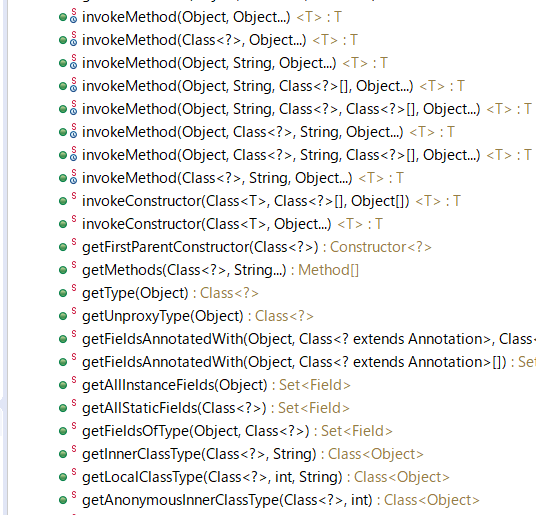はじめに
Junitテストケースを書く際に、privateメソッドのテストコードを比較的に書きにくいです。
invokeで書くのは一般的ですが、PowermockのWhiteBoxのメソッドを使うと便利です。
Invokeのテスト例
メソッド
public class UserUtil {
private String getYourName(String lastName, String firstName) {
return lastName + " " + firstName;
}
}
テストコード
import static org.junit.Assert.assertEquals;
import java.lang.reflect.InvocationTargetException;
import java.lang.reflect.Method;
import org.junit.Test;
public class UserUtilTest {
@Test
public void getYourName_useInvoke()
throws NoSuchMethodException, SecurityException, IllegalAccessException,
IllegalArgumentException, InvocationTargetException {
UserUtil userUtil = new UserUtil();
Method method = UserUtil.class.getDeclaredMethod("getYourName", String.class, String.class);
method.setAccessible(true);
String actual = (String) method.invoke(userUtil, "山田", "太郎");
assertEquals("山田 太郎", actual);
}
}
テストコードはちょっと長いです。
Powermock WhiteBoxの使う例
Powermockとは
staticメソッド、privateメソッドのmockをしやすくなります。
powermock-reflectとは
Gradleにpowermock-reflectを追加
build.gradle
// https://mvnrepository.com/artifact/org.powermock/powermock-reflect
testImplementation group: 'org.powermock', name: 'powermock-reflect', version: '2.0.9'
WhiteBoxのテスト例
@Test
public void getYourName_useWhiteBox() throws Exception {
UserUtil userUtil = new UserUtil();
String actual = (String) Whitebox.invokeMethod(userUtil, "getYourName", "山田", "太郎");
assertEquals("山田 太郎", actual);
}
簡潔に記載できました。
そのたメソッド
以上

